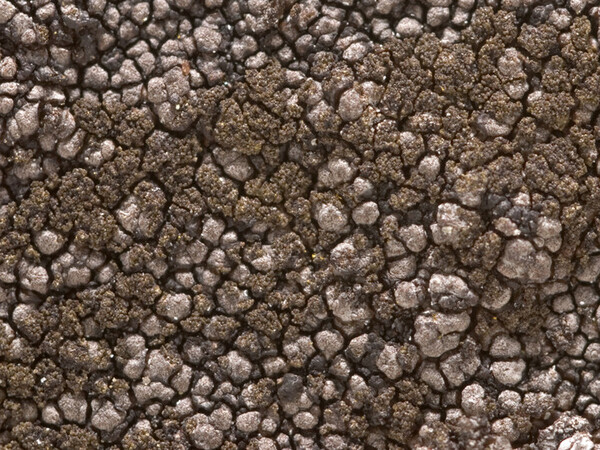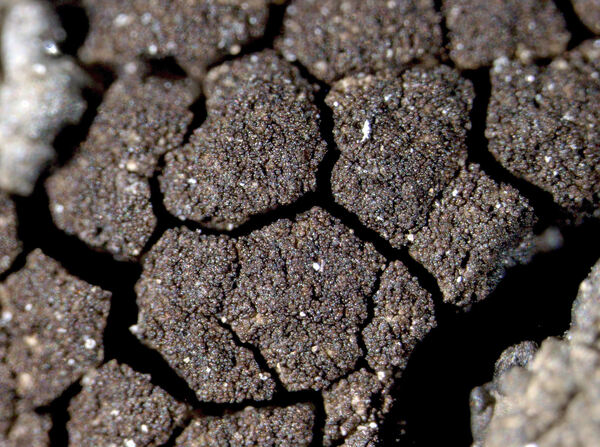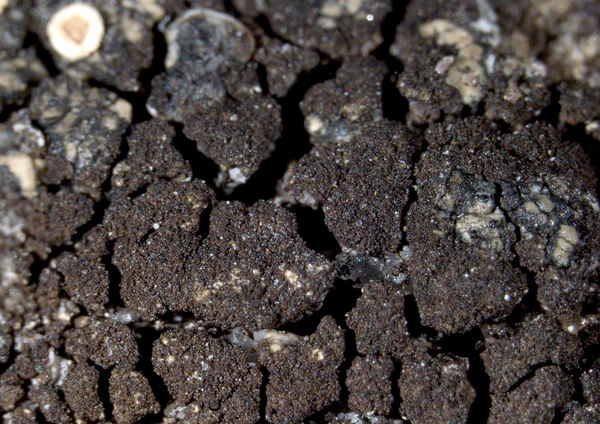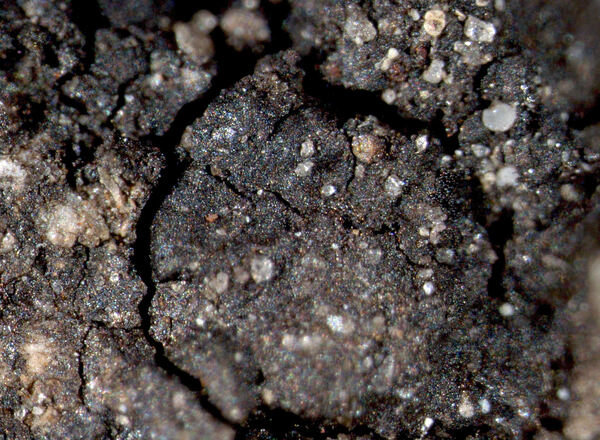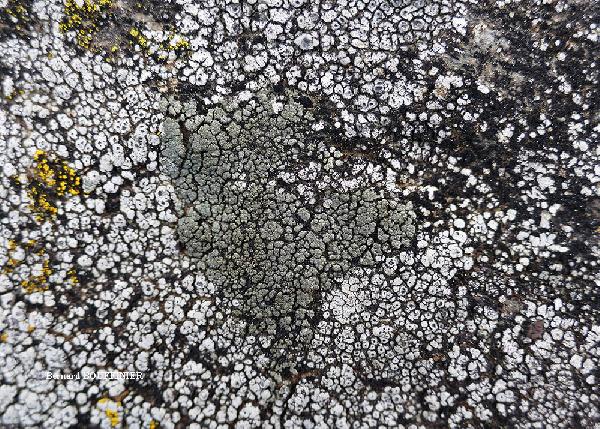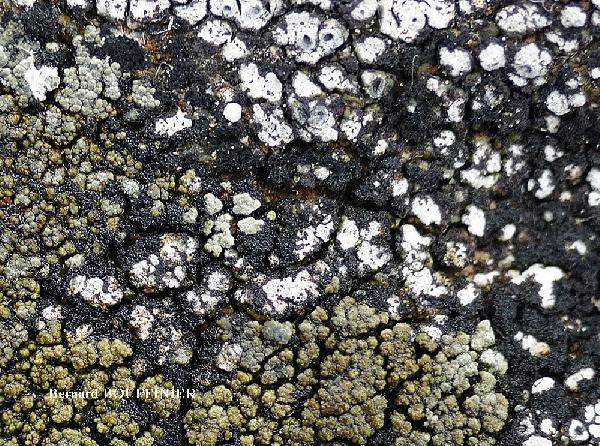Lambiella furvella (Mudd) M. Westb. & Resl
in Resl & al., Fungal Divers., 73: 255, 2015. Basionym: Lecidea furvella Nyl. ex Mudd - Man. Brit. Lich.: 207, 1861.
Synonyms: Lecidea furvula Nyl.; Lecidea nephaea var. isidiosa Erichsen; Lecidea orphnaeilla Stirt.; Lecidea spongiosula Nyl.; Rimularia furvella (Mudd) Hertel & Rambold
Distribution: S - Cal (MAF-Lich: 4390-1).
Description: Thallus crustose, episubstratic, starting the life-cycle on other silicicolous lichens, up to 0.8(-1) mm thick and up to 4 cm wide, rimose-areolate, dark brown to almost black, minutely isidioid or granular-sorediate, the granules (20-)30-40(-50) μm in diam, the areoles flat to slightly convex, irregular in outline, 0.4-0.5 mm wide. Apothecia not always present, lecideine, black, 0.3-0.8(-1.2) mm across, broadly adnate, with a flat to convex disc and a thin, raised proper margin. Proper exciple thin, 20-45 μm wide laterally, dark brown or olive brown throughout; epithecium dark brown; hymenium colourless, (40-)50-65(-75) μm high; paraphyses richly branched and anastomosing, the apical cells not strongly capitate; hypothecium pale to dark brown, 60-130 μm high. Asci 8-spored, broadly clavate, with a K/I+ blue tholus with a funnel-shaped central unstained region, and a small, obconical, apical K/I+ blue dome, Lambiella-type. Ascospores 1-celled, hyaline, ellipsoid, (10-)12-16(-20) x (5.5-)6-9(-10) μm. Photobiont chlorococcoid, the cells 6-12 μm wide. Spot tests: thallus, especially medulla, K-, C+ pink or rarely C-, KC+ pink or rarely KC-, P-. Chemistry: thallus with variable amounts of gyrophoric and rarely norstictic acids.Note: this silicicolous species is able to invade several crustose lichens pertaining to different lineages, most often Rhizocarpon-species; it certainly occurs also in the Alps, but was largely overlooked.
Growth form: Crustose
Substrata: rocks
Photobiont: green algae other than Trentepohlia
Reproductive strategy: mainly asexual, by isidia, or isidia-like structures (e.g. schizidia)
paras crustose lichens
Commonnes-rarity: (info)
Alpine belt: very rare
Subalpine belt: very rare
Oromediterranean belt: extremely rare
Montane belt: extremely rare
Submediterranean belt: absent
Padanian area: absent
Humid submediterranean belt: absent
Humid mediterranean belt: absent
Dry mediterranean belt: absent
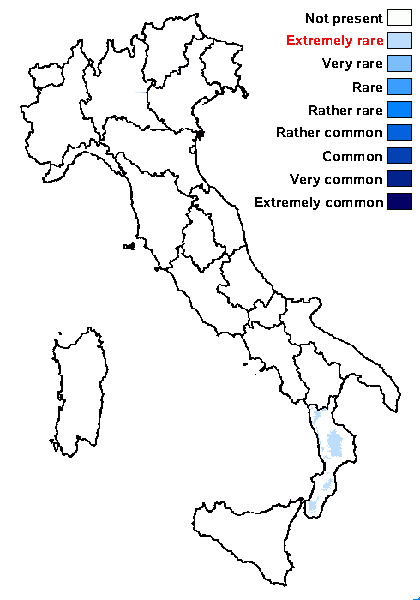
Predictive model
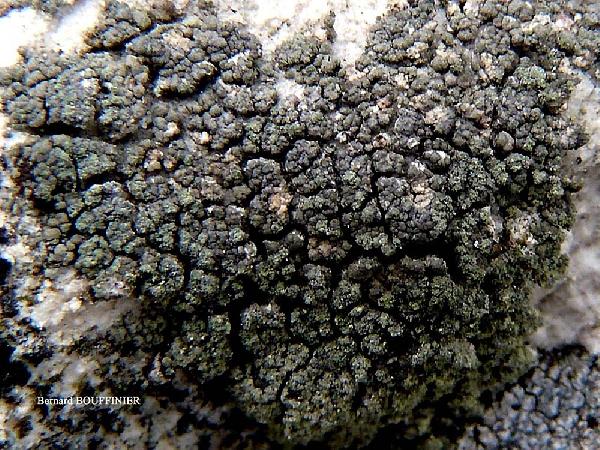
Bernard Bouffinier - Source: http://www.lichensmaritimes.org/index.php?task=fiche&lichen=386&lang=en
France, Botmeur
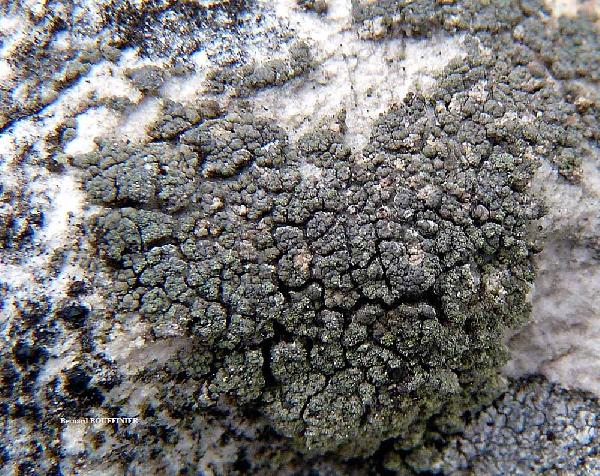
Bernard Bouffinier - Source: http://www.lichensmaritimes.org/index.php?task=fiche&lichen=386&lang=en
France, Botmeur
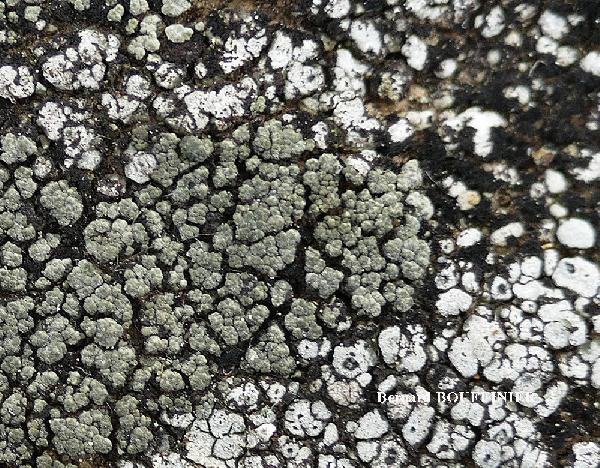
Bernard Bouffinier - Source: http://www.lichensmaritimes.org/index.php?task=fiche&lichen=386&lang=en
France, Plomodiern
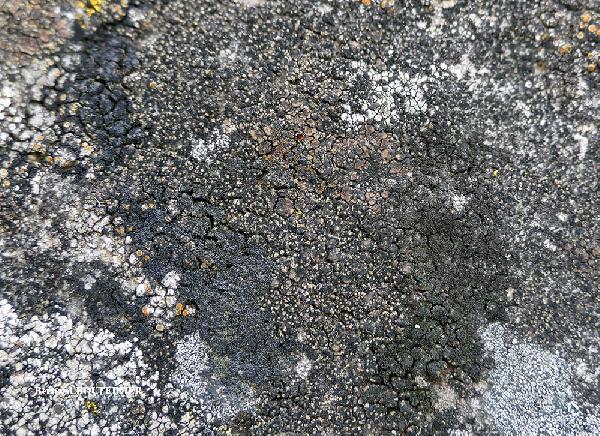
Bernard Bouffinier - Source: http://www.lichensmaritimes.org/index.php?task=fiche&lichen=386&lang=en
France, Plomodiern
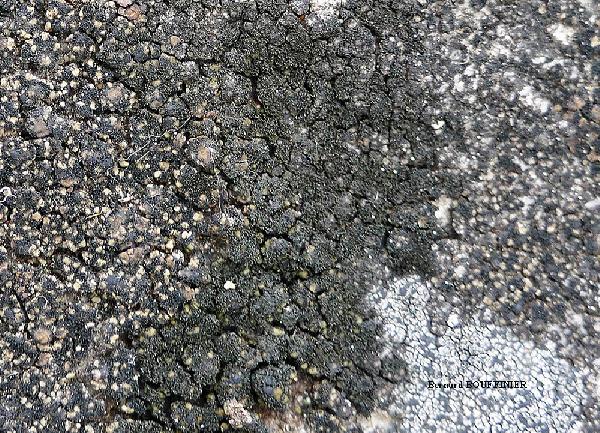
Bernard Bouffinier - Source: http://www.lichensmaritimes.org/index.php?task=fiche&lichen=386&lang=en
France, Plomodiern
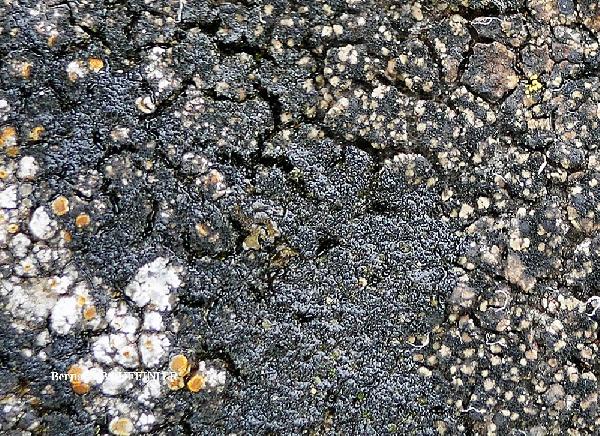
Bernard Bouffinier - Source: http://www.lichensmaritimes.org/index.php?task=fiche&lichen=386&lang=en
France, Plomodiern
Growth form: Crustose
Substrata: rocks
Photobiont: green algae other than Trentepohlia
Reproductive strategy: mainly asexual, by isidia, or isidia-like structures (e.g. schizidia)
paras crustose lichens
Commonnes-rarity: (info)
Alpine belt: very rare
Subalpine belt: very rare
Oromediterranean belt: extremely rare
Montane belt: extremely rare
Submediterranean belt: absent
Padanian area: absent
Humid submediterranean belt: absent
Humid mediterranean belt: absent
Dry mediterranean belt: absent

Predictive model

Bernard Bouffinier - Source: http://www.lichensmaritimes.org/index.php?task=fiche&lichen=386&lang=en
France, Botmeur

Bernard Bouffinier - Source: http://www.lichensmaritimes.org/index.php?task=fiche&lichen=386&lang=en
France, Botmeur

Bernard Bouffinier - Source: http://www.lichensmaritimes.org/index.php?task=fiche&lichen=386&lang=en
France, Plomodiern

Bernard Bouffinier - Source: http://www.lichensmaritimes.org/index.php?task=fiche&lichen=386&lang=en
France, Plomodiern

Bernard Bouffinier - Source: http://www.lichensmaritimes.org/index.php?task=fiche&lichen=386&lang=en
France, Plomodiern

 INDEX FUNGORUM
INDEX FUNGORUM
 GBIF
GBIF
